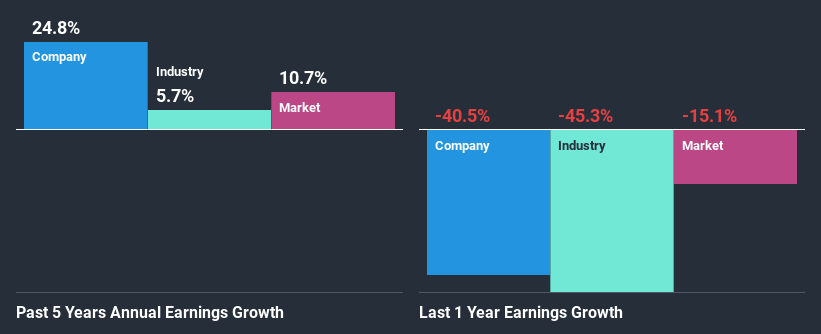Are Strong Financial Prospects The Force That Is Driving The Momentum In Springfield Properties Plc's LON:SPR) Stock?
Springfield Properties' (LON:SPR) stock is up by a considerable 39% over the past three months. Given that the market rewards strong financials in the long-term, we wonder if that is the case in this instance. Specifically, we decided to study Springfield Properties' ROE in this article.
Return on Equity or ROE is a test of how effectively a company is growing its value and managing investors’ money. Simply put, it is used to assess the profitability of a company in relation to its equity capital.
View our latest analysis for Springfield Properties
How Do You Calculate Return On Equity?
The formula for ROE is:
Return on Equity = Net Profit (from continuing operations) ÷ Shareholders' Equity
So, based on the above formula, the ROE for Springfield Properties is:
8.0% = UK£7.6m ÷ UK£96m (Based on the trailing twelve months to May 2020).
The 'return' is the amount earned after tax over the last twelve months. So, this means that for every £1 of its shareholder's investments, the company generates a profit of £0.08.
What Has ROE Got To Do With Earnings Growth?
We have already established that ROE serves as an efficient profit-generating gauge for a company's future earnings. We now need to evaluate how much profit the company reinvests or "retains" for future growth which then gives us an idea about the growth potential of the company. Assuming everything else remains unchanged, the higher the ROE and profit retention, the higher the growth rate of a company compared to companies that don't necessarily bear these characteristics.
A Side By Side comparison of Springfield Properties' Earnings Growth And 8.0% ROE
On the face of it, Springfield Properties' ROE is not much to talk about. However, the fact that the company's ROE is higher than the average industry ROE of 6.6%, is definitely interesting. Especially when you consider Springfield Properties' exceptional 25% net income growth over the past five years. Bear in mind, the company does have a moderately low ROE. It is just that the industry ROE is lower. Therefore, the growth in earnings could also be the result of other factors. Such as- high earnings retention or the company belonging to a high growth industry.
Next, on comparing with the industry net income growth, we found that Springfield Properties' growth is quite high when compared to the industry average growth of 5.7% in the same period, which is great to see.
Earnings growth is a huge factor in stock valuation. What investors need to determine next is if the expected earnings growth, or the lack of it, is already built into the share price. Doing so will help them establish if the stock's future looks promising or ominous. Has the market priced in the future outlook for SPR? You can find out in our latest intrinsic value infographic research report.
Is Springfield Properties Making Efficient Use Of Its Profits?
Springfield Properties' three-year median payout ratio is a pretty moderate 35%, meaning the company retains 65% of its income. By the looks of it, the dividend is well covered and Springfield Properties is reinvesting its profits efficiently as evidenced by its exceptional growth which we discussed above.
Additionally, Springfield Properties has paid dividends over a period of three years which means that the company is pretty serious about sharing its profits with shareholders. Upon studying the latest analysts' consensus data, we found that the company is expected to keep paying out approximately 32% of its profits over the next three years. Regardless, the future ROE for Springfield Properties is predicted to rise to 16% despite there being not much change expected in its payout ratio.
Conclusion
Overall, we are quite pleased with Springfield Properties' performance. Specifically, we like that it has been reinvesting a high portion of its profits at a moderate rate of return, resulting in earnings expansion. The latest industry analyst forecasts show that the company is expected to maintain its current growth rate. To know more about the company's future earnings growth forecasts take a look at this free report on analyst forecasts for the company to find out more.
This article by Simply Wall St is general in nature. It does not constitute a recommendation to buy or sell any stock, and does not take account of your objectives, or your financial situation. We aim to bring you long-term focused analysis driven by fundamental data. Note that our analysis may not factor in the latest price-sensitive company announcements or qualitative material. Simply Wall St has no position in any stocks mentioned.
Have feedback on this article? Concerned about the content? Get in touch with us directly. Alternatively, email editorial-team (at) simplywallst.com.

 Yahoo Finance
Yahoo Finance 
